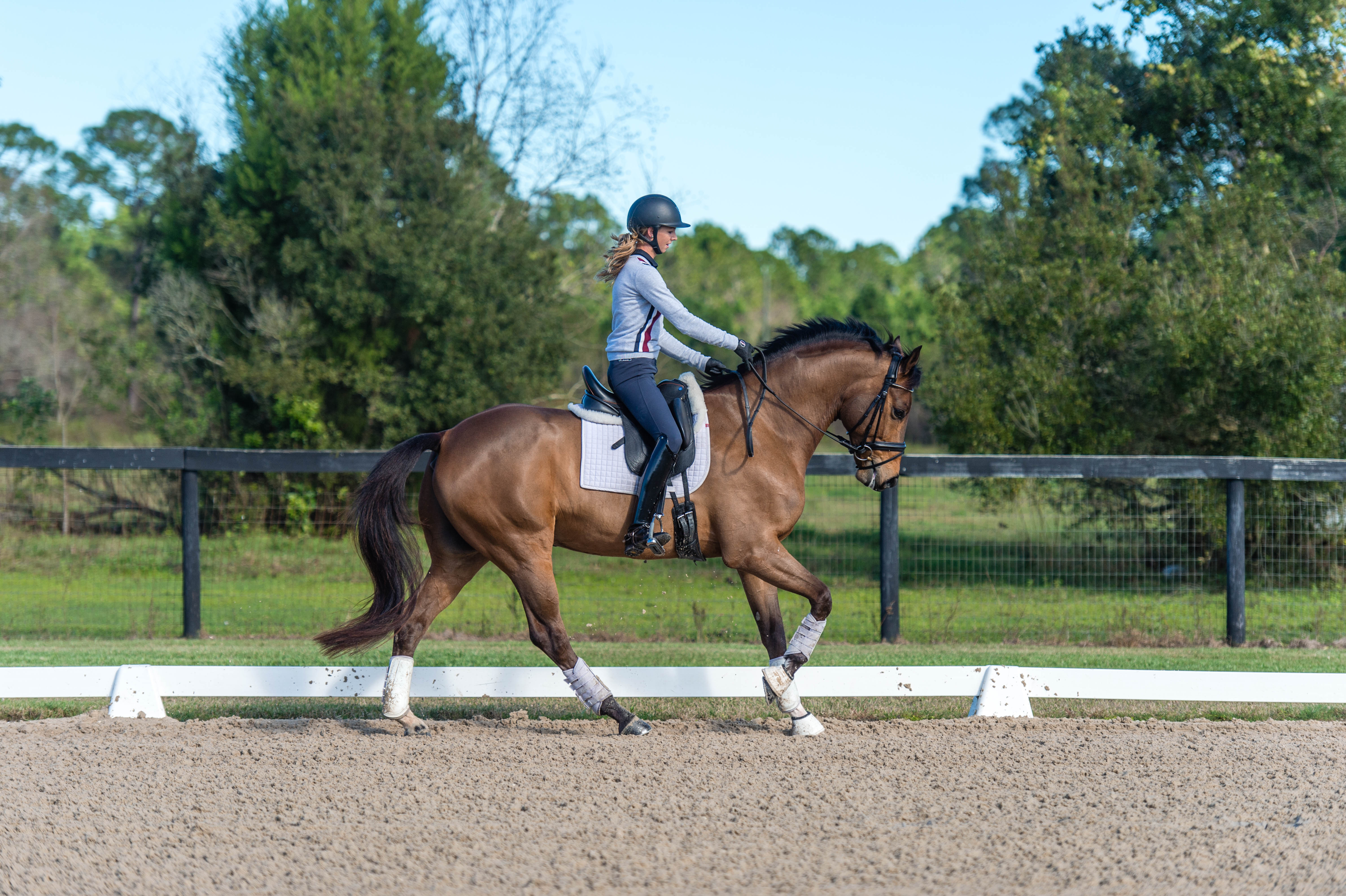
1. Carl Hester – “Every Transition Counts”
Downward transitions are crucial tools (especially for young horses) which are often used to help build strength, develop balance and get the horse off his forehand. “If you let the horse totally break down loose in a downward transition every time,” warns Carl, “that’s what he’ll do in the test.” Don’t rush them, he adds, and give your horse plenty of time to “find his legs.”
2. Isabell Werth – “Work the Walk”
“People forget to work in the walk, but you can do so much in it,” says Isabell. As a warm-up exercise for hotter horses, Isabell recommends a walk session of “collect and let go, collect and let go,” utilizing small transitions between collected and normal walk. This can encourage the horse to develop a more “honest” connection with the contact by reaching to the bit and engaging his whole body. “You could work at the walk for an hour a day, but nobody does it,” she adds, stressing that the gait has the potential to address many training issues.
3. Robert Dover – “Visualize Greatness”
To help achieve better throughness and straightness, try the rubber-band exercise. Move your horse from collected trot to medium trot and back to collected both on a circle and around the whole arena. (With less-experienced horses, the rubber-band exercise might be from working trot to lengthened stride.) Robert says to see “the grandest version you could possibly envision in your mind’s eye of you and your horse dancing around the arena,” adding that “you should have the beautiful vision of [Olympic gold-medalist] Valegro’s passage or extended trot. Try to match that vision. You can’t create what you don’t imagine.”

4. Laura Graves – “Relaxation is Key”
“One of the biggest confusions I see riders experience is striving for quiet hands but instead becoming too holding and restrictive with the reins,” says Laura. This, in turn, creates tension in the horse and discourages his forward movement. Similarly, many riders don’t realize how tight they are in their upper thighs, which can feel restrictive to horses. “So check that you are relaxed in your seat and upper thighs and keeping a soft, following feel of the reins,” she adds. “Finding a trainer who will help you develop these skills on a longe line is paramount.”

5. Charlotte Dujardin – “Think Forward”
“I never do sitting trot on young horses,” says Charlotte. Instead, she encourages leg-yields and trot accelerations in rising trot with the goal of strengthening the hindquarters and teaching reaction to the leg aids. “When they are 4, 5 and 6, what’s most important is getting their backs strong and having them go forward equally in both reins.” Young horses’ forehand-heaviness when asked to accelerate is normal because their hind ends aren’t yet strong enough to provide the lift needed for uphill carriage. And if you ask for more energy, but the horse breaks into the next gait, “That’s OK because at least it’s a reaction to the forward cue,” she says. “Don’t worry about that and don’t punish him for it.”










